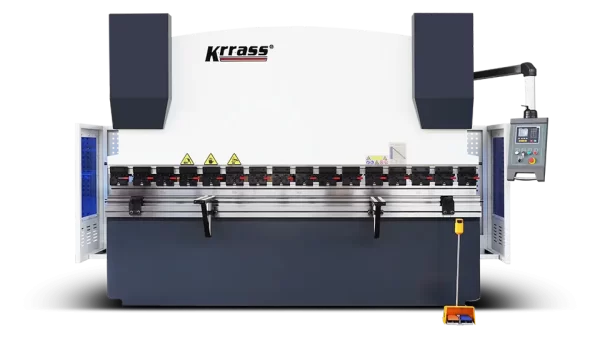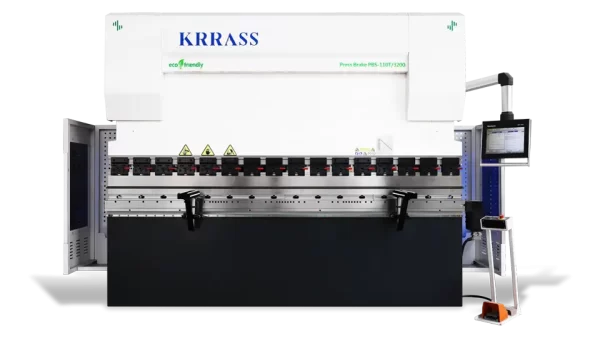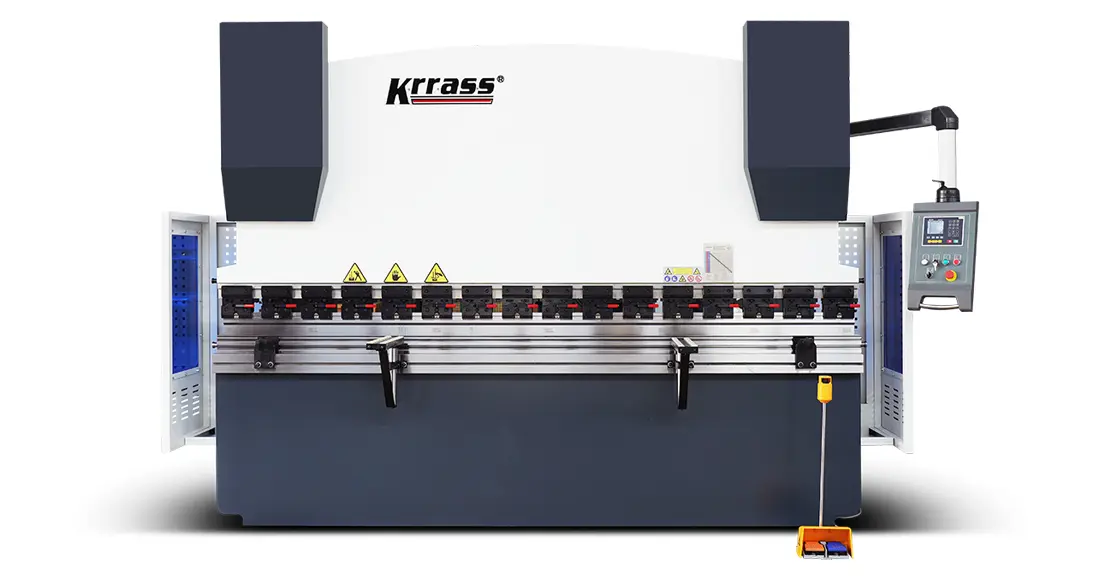Press brakes are essential machines to have in your workshops. What sets these machines apart is their durability and versatility. They possess unique capabilities for forming and bending sheet metals, even handling small pieces effectively. One well-known machine in this category is the press brake.
What are Press brakes?
A press brake is a specialized machine used for bending sheet metal. Its capabilities are determined by two factors: overall bending length and metal bending capacity. Press brakes are designed to be narrow and long, allowing for easy bending of sheet metal of any size. The process involves lowering a punch onto the sheet metal positioned over a die, repeatedly bending it until the desired shape is achieved.

Due to the different types of Press Brake machines on the market, it can be difficult to decide which one is the best for your needs. But don’t worry, KRRASS are here to help!
Request a callback
Visit our product
How do Press Brakes work?
Press brakes consist of several essential parts:
- Punch: The tool that bends the workpieces by "punching" them into the die.
- Workpiece: The surface on which the material is placed and the bend is applied.
- Die: The tool that enables the workpiece to bend.
Types of Press Brakes
Bending sheet metal requires significant force, and different methods are employed to generate and apply this force. Modern machines are more efficient than older ones and require less effort.
The main types of press brakes based on their operations are as follows:
Mechanical Press Brakes
These are the most common type of press brakes. They are powered by an internal motor that drives a large flywheel at high speed. The operator controls the flywheel through a clutch. Mechanical press brakes have simpler electronics, making maintenance and operation easier. They can handle loads up to three times their intrinsic rating. However, one drawback is that the ram must complete a full cycle once engaged, which could potentially lead to the press brake becoming locked if there is excessive ram travel.
Hydraulic Press Brakes
Hydraulic press brakes utilize hydraulic pressure to push the ram down instead of relying on mechanical means. They can have multiple cylinders, providing the operator with greater control over the bending process. This results in highly customizable and precise bends. Hydraulic press brakes, however, cannot exceed their rated tonnage. If flexibility is required for a project, mechanical press brakes are a better choice.

CNC Press Brakes
CNC (Computer Numerical Control) press brakes offer high customization and precision. They utilize computer technology to enhance efficiency and control accuracy. A trained operator can input data such as bending angle, plate thickness, and width into a controller, which then governs the brake's operation.

Applications of Press Brakes
- Automotive industry
- Aerospace industry
- Furniture manufacturing
- Marine engineering
- Metal artwork
- Metal container production
- Various other sheet metal applications
Advantages of Press Brakes
1. Increased Flexibility
Unlike other machines, press brakes are capable of bending small parts as well as larger amounts of metal. They are suitable for sheet metals of any size.
2. Reduction of Material Waste
Press brakes offer high precision and accuracy, resulting in less waste of materials compared to other equipment used in manufacturing.
3. Cost-effectiveness
The dies used in press brakes are relatively inexpensive, and they have a long service life.
4. Ability to Perform Both "S" and "U" Bends
Press brakes can handle the more complex task of stamping "U" moldings, in addition to performing "S" bends. This versatility is facilitated by the press brake.
5. Prototyping Capabilities
One significant advantage of press brakes is their ease of setup and tooling. This enables quick switching between different applications, simplifying the process of prototyping and shaping applications.
Request a callback
Visit our product
Visit our Youtube channel
Which press brake machine is right for you?
If you need any questions answered or to discuss your Press Brake requirements for your unique business, please contact us today on 0086 18952087956 or using our online contact form.
In conclusion, press brakes are essential machines in the sheet metal industry for bending metals into various shapes and sizes. Their significance is comparable to power press machines and shearing machines in this industry.





